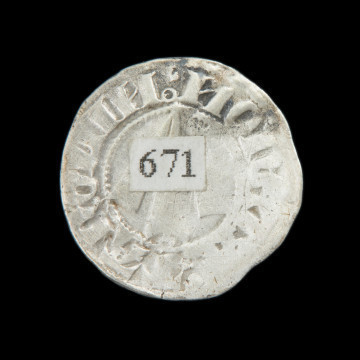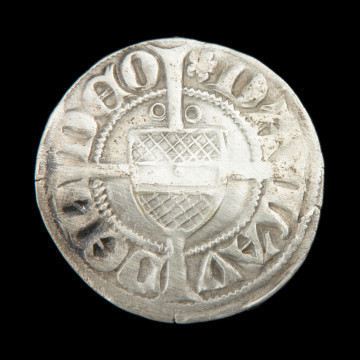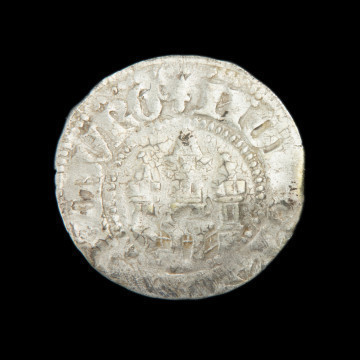
Follis of Constantine I
XV wiek
National Museum in Szczecin
Part of the collection: Szczecin treasure from Podzamcze
In 1295, Western Pomerania was divided into the duchies of Szczecin and Wolgast. The Wallachian duchy included centres which strongly marked their presence in the developing urban mint: Greifswald (Gryfia), Stralsund (Strzałów), Anklam (Tąglim), Demmin (Dymin) and the ducal capital Wolgast (Wołogoszcz). They belonged to the Hanseatic Union, a trade league of cities in Northern Europe, supporting everyday commercial and economic activities, including minting. In 1395, they signed an agreement introducing a new silver monetary unit - coarse pfennig, corresponding to 2 wittens (1 witten = 4 denars). A collection of coarse pfennigs and other Pomeranian silver coins with costume ornaments was discovered in 1999 in Szczecin, in the Oder district. One of the pfennigs was struck in Dymin, as evidenced by the inscriptions on the rim: CIVITAS DUC WOLGA (city of the Wolgast Duchy) and MONETA DEMINEN' (the coin of Demmin). A lily is depicted on the reverse of the coin. Today, the municipal coat of arms of Dymin features two such lilies placed on the towers of the town gate. In the Middle Ages, the sign symbolised purity, beauty, glory, majesty and rebirth. The name of one of the oldest Slavic towns in Western Pomerania comes from a Swabian word meaning smoke or mist. In the 12th century, Demmin became an important trade and craft centre, often visited by the dukes of the Griffin dynasty.
Małgorzata Peszko
Dimensions
cały obiekt:
Object type
coin
Creation time / dating
Creation / finding place
Identification number
Location / status

XV wiek
National Museum in Szczecin

1405 — 1449
National Museum in Szczecin

1370
National Museum in Szczecin
DISCOVER this TOPIC
Castle Museum in Łańcut
DISCOVER this PATH
Educational path